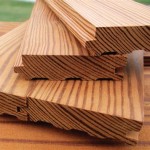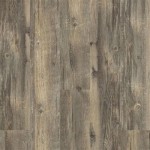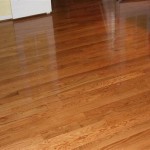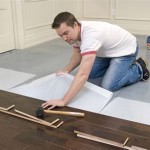Fitting Parquet Flooring: A Comprehensive Guide
Parquet flooring, with its intricate patterns and timeless elegance, remains a popular choice for homeowners seeking to enhance the aesthetic appeal and value of their properties. Its enduring popularity is fueled by its durability, versatility, and ability to transform any space into a luxurious haven. However, installing parquet flooring is a complex endeavor that requires meticulous planning, precise execution, and a keen eye for detail. This comprehensive guide delves into the intricacies of fitting parquet flooring, equipping you with the knowledge and understanding to embark on this rewarding project.
Understanding Parquet Flooring
Parquet flooring encompasses various styles and configurations, each contributing to its unique charm and aesthetic appeal. The most common types include:
- Strip Parquet: Composed of narrow rectangular strips arranged in various patterns, such as herringbone, basket weave, or chevron.
- Block Parquet: Features square or rectangular blocks assembled in intricate geometric designs.
- Mosaic Parquet: Consists of small pieces of wood crafted into elaborate patterns, offering an exquisite and intricate look.
Parquet flooring is typically made from hardwood species like oak, maple, walnut, or cherry, each possessing its own distinctive grain patterns and color variations. The choice of wood type will influence the flooring's durability, aesthetic appeal, and maintenance requirements.
Preparing the Subfloor
Before laying parquet flooring, it is imperative to ensure a smooth, level, and stable subfloor. This foundation serves as the base for the parquet, dictating its stability and longevity. Uneven or weak subfloors can lead to floor movement, squeaking, and ultimately, damage to the parquet. The subfloor preparation process typically involves:
- Surface Inspection: Carefully examine the subfloor for any imperfections, such as cracks, gaps, or unevenness.
- Repairing Defects: Repair any existing defects using appropriate methods like patching, leveling, or replacing damaged sections.
- Leveling: Use a leveling compound to create a smooth and even surface, ensuring a consistent foundation for the parquet.
- Moisture Barrier: Apply a moisture barrier to prevent moisture from penetrating the subfloor and causing damage to the parquet.
Laying the Parquet Flooring
Once the subfloor is prepared, the process of laying parquet flooring commences. The specific techniques employed will vary depending on the chosen style and installation method. However, the general steps include:
- Layout: Determine the desired pattern and layout of the parquet flooring. Consider factors like room size, furniture placement, and natural light.
- Installation Method: Parquet flooring can be installed using various methods, including glue-down, floating, or nailing. The chosen method will influence the subfloor requirements and installation process.
- Cutting & Fitting: Accurately cut and fit the parquet pieces to create a seamless and aesthetically pleasing installation. This step requires precision and careful attention to detail.
- Joining & Securing: Secure the parquet pieces using the chosen installation method, ensuring a strong and stable bond between the flooring and the subfloor. This step involves using adhesives, nails, or other fastening methods.
- Finishing Touches: Once the parquet is laid, apply a protective finish, such as oil, wax, or polyurethane, to enhance its durability, resistance to wear and tear, and aesthetic appeal.
Considerations for Fitting Parquet Flooring
Installing parquet flooring presents several considerations that require careful planning and execution. These factors can significantly impact the final outcome and the longevity of the flooring:
- Room Size & Shape: The dimensions and shape of the room will influence the parquet layout and the amount of material needed.
- Traffic Patterns: Consider areas of high traffic and choose materials and installation methods that can withstand heavy foot traffic.
- Environmental Factors: Account for factors like humidity and temperature fluctuations, which can affect the expansion and contraction of wood.
- Professional Expertise: For complex installations or if you lack experience, it is recommended to consult a professional flooring installer to ensure a successful and durable installation.

Diy Laying Engineered Oak Parquet Flooring Swoon Worthy

Diy Laying Engineered Oak Parquet Flooring Swoon Worthy

Installation Methods For Wooden Floor Craftedforlife

How I Do These Floors Herringbone Parquet Wood Floor Business

Laying A Parquet Floor

Laying Parquet Flooring Real Wood Watford

How To Fit A Herringbone Floor Kite Flooring
.jpg?strip=all)
Why Preparation Work Is So Important When Installing Parquet Flooring

Steve Coleman Laying Parquetry Flooring

How To Fit A Herringbone Floor Kite Flooring
Related Posts








